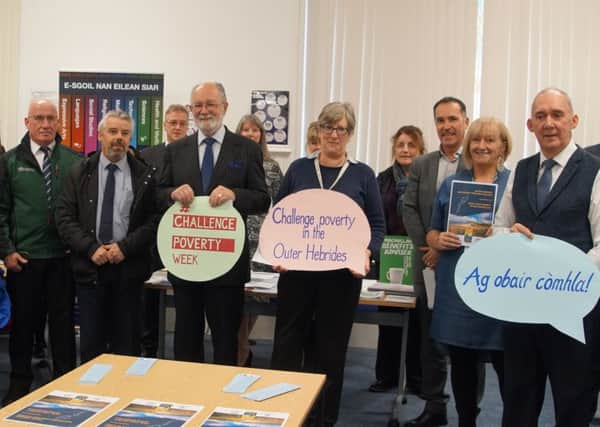Anti-poverty strategy launched as it is revealed that 737 children in the Isles live in low income families


The priority of the new strategy is to address poverty associated with low income from employment, the cost of living and income from benefits, and to place ‘the real lived experience of poverty’ in the Western Isles at the centre of the multi-agency approach.
The new strategy, developed by the Outer Hebrides Community Planning Partnership, also incorporates the Local Child Poverty Action report of 2019 and will be delivered through the joint working of Comhairle nan Eilean Siar, NHS Western Isles and the Third Sector.
Advertisement
Hide AdAdvertisement
Hide AdScottish government legislation has set in place targets for the reduction of child poverty by 2030.
It requires local authorities and health boards to report annually on their measures to address child poverty.
This requirement is the focus of the local anti-poverty strategy working group.
The strategy will be further supported by a series of five ‘engagement events’, called ‘Get Heard’, to be held across the islands between November and April with a view to enabling local people to input their experiences of living with poverty and its impacts.
Advertisement
Hide AdAdvertisement
Hide AdRecent figures, given at the launch event, show that there are currently 737 children living in low income households in the Western Isles.
The Outer Hebrides is in the top third of areas in Scotland ‘where children are likely to be living in poverty’.
Figures in the strategy show that whilst employment rates in the Western Isles are higher than the Scottish average, wages and GVA levels are ‘noticeably lower’ than the Scottish average, along with a higher proportion of local households living in fuel poverty and with homes that have low levels of energy efficiency.
At the launch, organisers also stated that national measures for poverty and deprivation are based on urban population models and do not fully reflect the realities of poverty in sparsely populated areas such as the Western Isles.
Advertisement
Hide AdAdvertisement
Hide AdPart of their work will be to properly measure poverty in the area reflecting issues that are overlooked in more urban-focussed national statistics.
The Western Isles is Scotland’s local authority area with the lowest population density.
Speaking at the launch, Dr Margaret Watts, Director of Public Health at NHS Western Isles said that some of the health and poverty challenges faced in the Western Isles are depopulation, the loss of young people to the mainland and an ageing population and confirmed that patterns of ill health in the islands are also more closely like those of the urban west Scotland than ‘would normally be expected in rural areas’.
Dr Watts said: “We have identified priorities and those include the very early years of life , the first 1,000 days of a child’s life, where inequalities first arise, where brain damage and brain changes can be permanent and irreversible and have an impact on the child’s life.
Advertisement
Hide AdAdvertisement
Hide Ad“We are also looking at addressing intergenerational issues that perpetuate health inequalities.”
Cllr McCormack, Chair of the anti-poverty strategy working group, said: “Within this plan are practical actions which are presently taking place, plus actions for the future which will contribute to eliminating child poverty.
“To implement the plan we have a team of officers who I know have the commitment to make a real difference.”